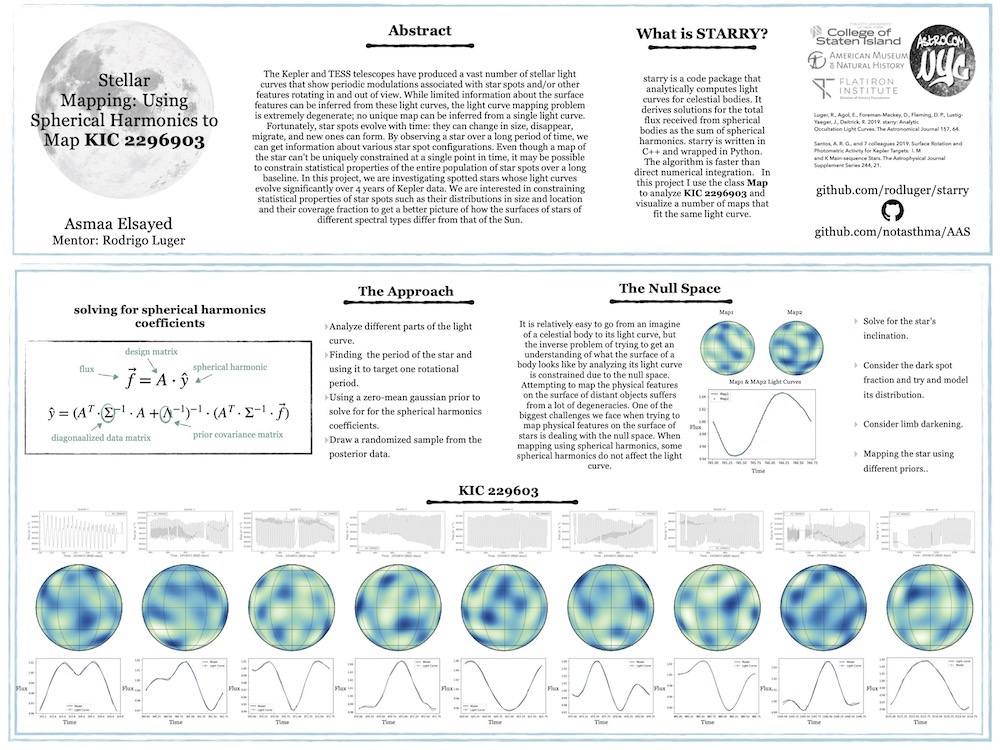Fran Bartolic (2020-)
I advised Fran Bartolic as part of the
CCA
pre-doctoral program. Fran is a graduate student at the
University of St. Andrews working on microlensing and statistical
methods for astronomy. Our project, however, was somewhat outside both Fran's
and my
wheelhouse: mapping volcanoes on the surface of Io, the moon of Jupiter.
There is a lot of high-quality archival data on occultations of Io by Jupiter
and the other
Galileian moons (Europa, Callisto, and Ganymede), which Fran used to infer the
locations and brightnesses of the main volcanic regions on the moon. The
significance
of this project lies in the fact that (1) we know the ground truth to some
extent
from fly-bys of Io, so it's a great benchmark for exoplanet secondary eclipse
mapping
in the near future; and (2) we don't know the ground truth
all that well, since Io's surface is
constantly
evolving. Fran is working on a joint analysis of all observations of Io to
infer the time evolution of the surface in a principled, Bayesian way, which
could lead to new insights into the physics of the moon's interior and its tidal
interaction with Jupiter.




